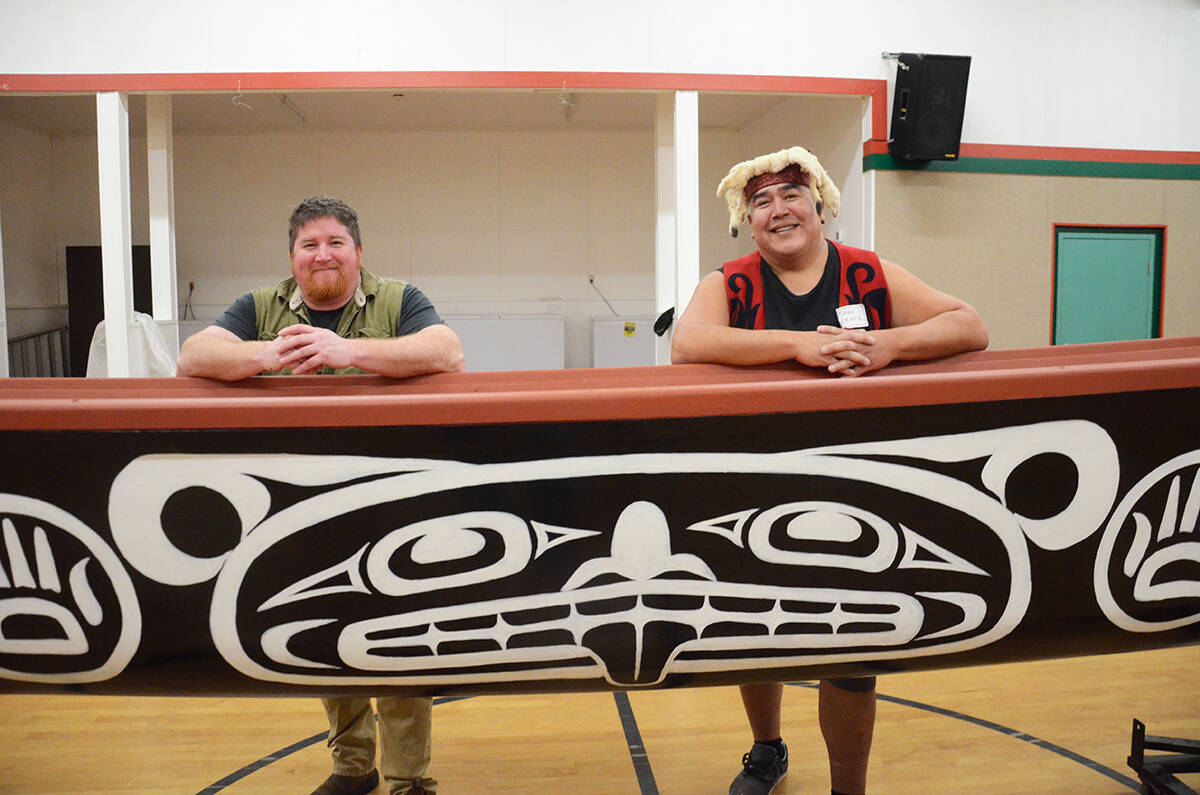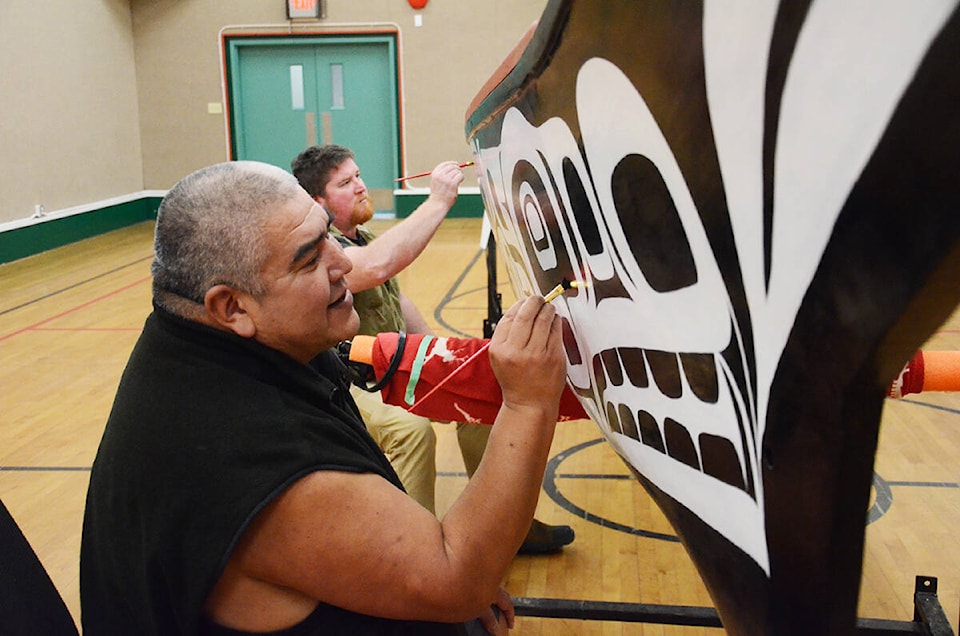K’ómoks First Nation’s current canoe has seen many journeys, but now it’s time to find a new vessel.
The community had last carved a canoe back in the mid-1990s, and the project has been planned for some time. The idea began following a tribal journey for the I-Hos canoe in 2014.
So far, much of the effort has gone to finding the right wood. The right red cedar was discovered last spring, with some help from Guy Wright and Western Forest Products, and the work could begin, following a blessing ceremony.
Carver Joe Martin from Tla-o-qui-aht First Nation in Tofino was commissioned as lead artist by Chief Nicole Rempel to carve the vessel, while locals Sean Frank and Trevor Hardy have been apprenticing with him.
“Joe is considered to be a master carver,” Frank says. “He’s carved a lot of canoes up and down the coast.”
Frank and Hardy were chosen to paint and design the new canoe, and they say they have learned a lot from Martin on this project.
Of late, they were putting some touches on the canoe with paint to get it ready for completion. The launch will likely happen when the weather improves, with details to be released once the event is finalized.
Once complete, the new vessel will replace the I-Hos canoe, which was carved more than 20 years ago, during, as Frank says, a period of cultural resurgence.
“It was used in several canoe journeys,” Frank says. “It has a lot of miles on it.”
Both artists talked about the resurgence of culture through this kind of work, as well as how satisfying it is as artists to work on such an important project for the K’ómoks First Nation community. Hardy, who’s been interesting in woodworking all his life, described this job as a new experience.
“This was my first opportunity to be involved in something like this,” he says.
For the new canoe, the log search took some time because the right wood, meaning the right size and quality, had to be found. As Hardy says it could not be rotten, cracked or hollow. The log is about 500 years old, possibly from the central Vancouver Island region.
The carving started in early September and ran through most of October. It then had to be steamed and dried, and the painting began more recently. The vessel is about 32-feet long and should hold six to eight people.
“It will be used by the community for future tribal journeys and cultural uses,” Frank says.
READ MORE: I-Hos Gallery celebrates 25 years of promoting First Nation artwork
As far as the design goes, the sisiyutł they chose is a double-headed serpent — a supernatural being that comes from an old design. It represents the idea of ‘balance’ through choice. Frank says he was inspired by a canoe his grandfather, Doug Cranmer, made back in the 1990s.
The paint used also must be of good quality to withstand a marine environment. They have chosen a Navajo red to go with the black and white. As well, they have left some circles bare on the hull, as if to allow one to see into the soul of the wood — something that serves as a reminder of its past.
“It was once a living tree,” says Hardy.
mike.chouinard@comoxvalleyrecord.com
Like us on Facebook and follow us on Twitter.

